So far there is no direct pattern support in Graphics32, but there are dozens of ways to create patterns like the one you want to use.
Here's one solution using a sample polygon filler:
First you need to write a sampler class for the hatched pattern. There are several ways to build such a sampler. Below you can find a very simple one:
type
THatchedPatternSampler = class(TCustomSampler)
public
function GetSampleInt(X, Y: Integer): TColor32; override;
end;
function THatchedPatternSampler.GetSampleInt(X, Y: Integer): TColor32;
begin
Result := 0;
if ((X - Y) mod 8 = 0) or ((X + Y) mod 8 = 0) then
Result := clRed32
end;
You only need to override one method here (GetSampleInt), all other methods can be used from the ancestor class.
Now it gets a little bit convolved. In order to use the sample you must use it on to top of a TSamplerFiller like this:
Sampler := THatchedPatternSampler.Create;
Filler := TSamplerFiller.Create(Sampler);
Once you have this filler you can use it in PolygonFS or even PolylineFS.
Finally the code may look like this:
var
Polygon: TArrayOfFloatPoint;
Sampler: THatchedPatternSampler;
Filler: TSamplerFiller;
begin
Polygon := Ellipse(128, 128, 120, 100);
Sampler := THatchedPatternSampler.Create;
try
Filler := TSamplerFiller.Create(Sampler);
try
PolygonFS(PaintBox32.Buffer, Polygon, Filler);
finally
Filler.Free;
end;
finally
Sampler.Free;
end;
PolylineFS(PaintBox32.Buffer, Polygon, clRed32, True, 1);
end;
This will draw a rather big ellipse to the center of a bitmap (here: the buffer of a TPaintBox32 instance) and fill it with the hatched sampler code. Finally a solid outline is drawn using the PolylineFS function.
From a performance perspective this isn't the fastest approach as GetSampleInt gets called per pixel. However, it's the easiest to understand what happens.
For a faster alternative you should directly use a filler directly. You can derive directly from TCustomPolygonFiller like this:
type
THatchedPatternFiller = class(TCustomPolygonFiller)
private
procedure FillLine(Dst: PColor32; DstX, DstY, Length: Integer; AlphaValues: PColor32);
protected
function GetFillLine: TFillLineEvent; override;
end;
where the method GetFillLine gets as simple as:
function THatchedPatternFiller.GetFillLine: TFillLineEvent;
begin
Result := FillLine;
end;
However, the FillLine method will be a bit more complex like this:
procedure THatchedPatternFiller.FillLine(Dst: PColor32; DstX, DstY,
Length: Integer; AlphaValues: PColor32);
var
X: Integer;
begin
for X := DstX to DstX + Length do
begin
if ((X - DstY) mod 8 = 0) or ((X + DstY) mod 8 = 0) then
Dst^ :=clRed32
else
Dst^ := 0;
Inc(Dst);
end;
end;
Since DstY remains constant you could also refactor the code to improve the performance. Or you could speed up the code using assembler (SSE), but I guess this would be overkill for such a simple function.
